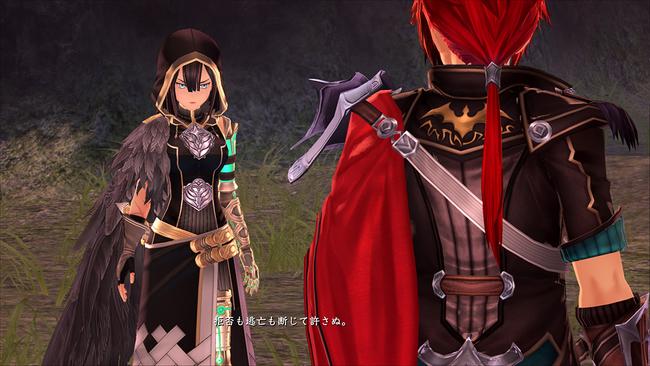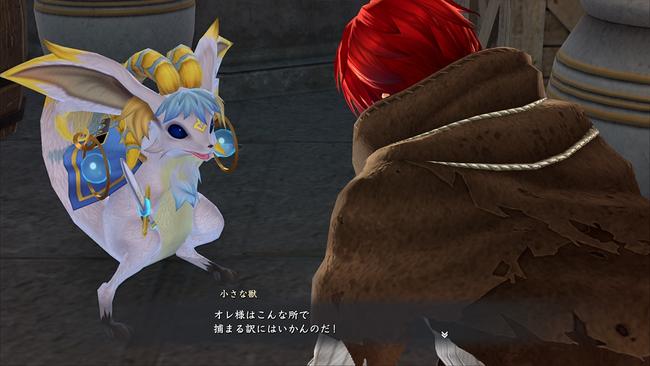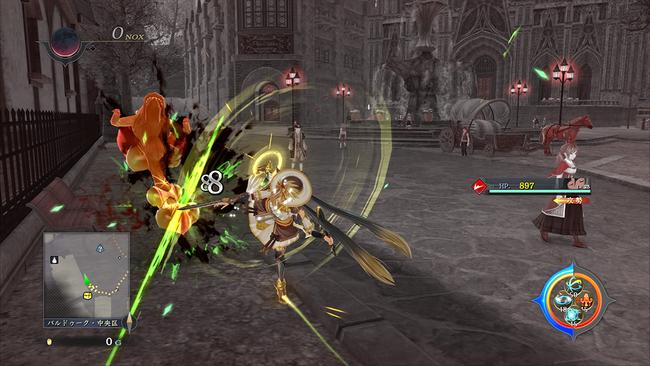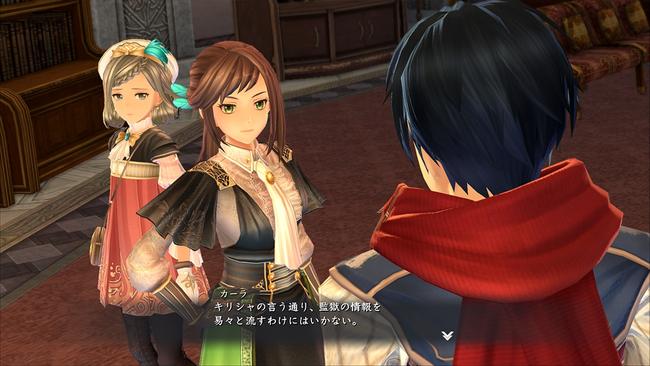
Ys IX: Monstrum Nox Import Review
In a way, it feels almost appropriate that Ys IX: Monstrum Nox – ostensibly a story about people trapped within society, itself a reversal of Ys VIII’s plot of people stranded outside society – would feel so shackled by Falcom’s continued homogenization of their franchises. As a longtime Ys fan, an equally large Falcom fan, and perhaps, more importantly, a Legend of Heroes fan, there were times while playing through Ys IX that have instantly become iconic. Ys IX includes some of my favorite moments from any of the many Falcom games that I’ve played; flashes of creativity that help remind me that the Falcom that made such classics as Xanadu Next and Brandish: The Dark Revenant are still in there, somewhere. Despite all of that, however, the game’s numerous faults are unavoidable.
I’ll get it out of the way – I don’t think you should play Ys IX as your first Ys title. While that might seem obvious enough if you aren’t already a fan of the series (there is that “IX” in the title, after all), the vast majority of the Ys series is perfectly serviceable as someone’s first game. No prior knowledge is so influential to your enjoyment of a game, that one might want to dissuade you from playing it if you haven’t devoured the series’ history up until that point. Ys IX, however, delights in not just referencing prior games in the series, but ties the expected reaction that a player might have from catching these references into how the plot is actively advanced. Much like I mentioned in my Trails of Cold Steel III review, much of my enjoyment of this game came from those same callbacks.

That’s not the only problem with the game’s plot either, of course. Following in Tokyo Xanadu and Ys VIII’s footsteps, Ys IX leans even more heavily in the sort of tropes that Falcom’s Legend of Heroes’ franchise has popularized. Character Bonds, numerous sidequests attached to a bulletin board (as well as plenty that aren’t listed), longer cutscenes breaking up the action with hours of exposition, a much larger emphasis on character writing, and much more. Not all of these are inherently bad for an RPG, but while Ys VIII achieved the sort of balance where I didn’t think the story necessarily got in the way of the gameplay (at least in the updated PS4 version that made Dana’s story sections more than just interactive cutscenes), Ys IX absolutely drags its feet for the first few chapters of the game.
A lot of this has to do with the fact that, since the game is so heavily emphasizing the city, a lot of the locations that you visit in the first half of the game are similar. It’s not until Chapter 4 that players start to explore locations that aren’t just portions of the city/prison (a small spoiler, I suppose, but not exactly major), and even then – with the exception of the last few dungeons in the game, none of them were especially memorable, especially compared to the landscapes in Ys VIII. Whereas Ys VIII feels like it’s firing on all cylinders from the start – Ys IX’s level design feels muted from the beginning, and while there are parts of the game that stand out, the overall experience definitely feels a little more subdued from start to finish.

Really, that last bit can be said about everything in Ys IX. The story has some absolutely shocking moments, but the pacing is inconsistent. Bosses are mostly great, but there aren’t as many as in Ys VIII, and there are a few stinkers. Most of the Monstrum’s Gifts are interesting to play with – but for the most part, the latter half of those Gifts players receive are underutilized. The music – mostly ok, with some stand-outs. The graphics? Worse than Ys VIII on PS4 most of the time, with a few locations (particularly at the end) that look better.
Especially once you consider the game’s performance, it feels obvious that Ys IX was more than a little rushed. While Ys VIII on PS4 was mostly a locked 1080p/60, Ys IX is most certainly not. I don’t know the details about the resolution, but the framerate is almost never consistent. Even when framerate doesn’t dip, the framepacing could certainly leave a lot to be desired. A patch was released after I finished the game which helped deal with the framerate, but it’s still not where it should be, and framepacing is still a problem. It’s absolutely an issue if there are portions in Ys IX that run worse than Ys VIII did on Vita. At least Ys VIII on Vita was legitimately technically impressive for the system – the same just can’t be said with Ys IX on PS4.

Ys IX is at its best when it uses its own unique ideas – the sidequests with a certain character that I shall not name – are almost like a modern-day Brandish, and I’m here for it. The moments in the final dungeon when the Monstrum’s Gifts are properly used shows the potential that each of them had – they just didn’t have the chance to use them to their fullest. Chapter 8’s dungeon is an excellent example of how when Ys IX’s story excels, it stands alongside the best of Ys’ set-pieces. I just wish we had more of those here, like in Ys VIII.
Ys IX's gameplay is more or less the same as Ys VIII, with a few small changes. Monstrum Gifts - special abilities granted to each of the game's titular Monstrum - layer on top of the abilities that players already had access to in Ys VIII. Most of them are movement-related, like Adol's Crimson Line - which acts like Nero's demonic arm in Devil May Cry 4 - and White Cat's Heaven's Run, which lets you run up walls, while others like Doll's The Third Eye and Renegade's Shadow Dive are more specialized. Each of them drains power from a bar that appears under your character whenever one of their abilities is active. You can use an ability as long as energy remains in the bar, but fully depleting it will elicit a lengthy cooldown. Once things get going and you've received all of the abilities, it feels great to just move around the world - but it takes entirely too long to get to that point, and too many of the Gifts are woefully underutilized.

The other major addition to the gameplay is the changes to the Extra Attack; it has been replaced with a Boost Gauge, similarly to the ones found in Ys: Oath in Felghana and Ys: Origin. You can activate boost whenever the gauge is at least 50% full, and uses the same L1+R1 button mapping as previous games. Boost not only strengthens your attacks, but also increases your SP recovery to allow you to shoot out Special Attacks more frequently - pressing L1+R1 again while Boost is still active allows you to use your character's Extra Attack much like in Ys VIII.
Speaking of Ys VIII, Ys IX absolutely borrows quite a few of that game’s gameplay mechanics, but they’re rarely as well utilized. Village Defense and the PS4 version’s additional Suppressions are more or less represented during Grimwald Nights with their each respective variants. While seeing all of your party members participating in the fight at the same time (all 6 Monstrum appear and attack with you on the field at the same time), not only does it not feel as novel as in Ys VIII, it feels like you’re flung into these operations much more frequently than in Ys VIII. That, and it feels like these sections take longer on average to boot.

Similarly, Adol and friend’s home base in “Dandelion”, a bar, doesn’t have that same sort of feeling as Castaway Village in Ys VIII. Finding new members of your party to join the Bar doesn’t feel as natural as in Ys VIII, either. Once again, those sidequests with a certain character are the one stand-out – as they also tie into a few of the characters that you rescue from the prison to join your party. Honestly, I don’t know why these quests weren’t just required from the get-go. They’re some of my favorite sections of the game and they almost tie into the main story. It seems odd that players could just… miss them if they opted to avoid those sidequests. It certainly makes the payoff of a section near the end of the game fall a bit flat if you hadn’t been participating in those quests.
When all is said and done, I still greatly enjoyed my time with Ys IX… but there’s a lot to be said about consistency. While parts of Ys IX are better than portions of Ys VIII, the overall experience’s inconsistency holds it back. As someone that has played every version of Ys VIII, I can’t help but compare Ys IX as it is now to Ys VIII with its Vita release. That being the case – I’m hopeful that we can see an expanded version of Ys IX in the future that fixes many of its faults, too. Ys IX still holds so much potential and is worth playing today (if you know Japanese, of course), but with just a few changes it could become something truly special. Let’s just hope Falcom will decide to give it that extra treatment down the road.